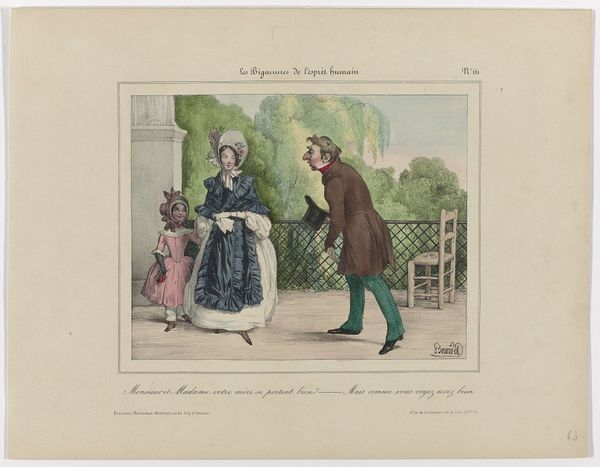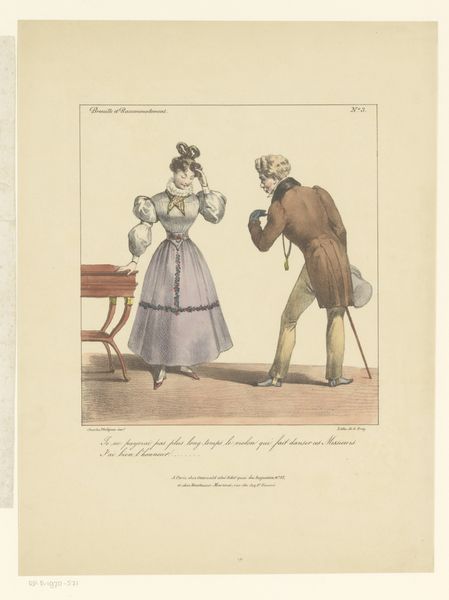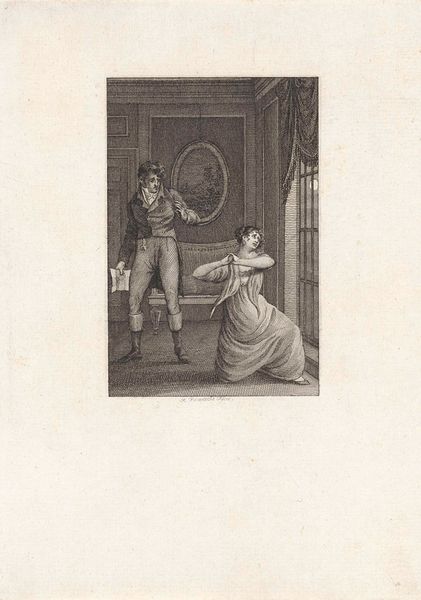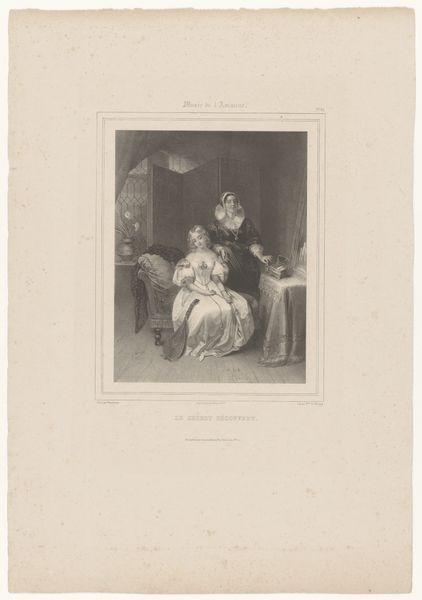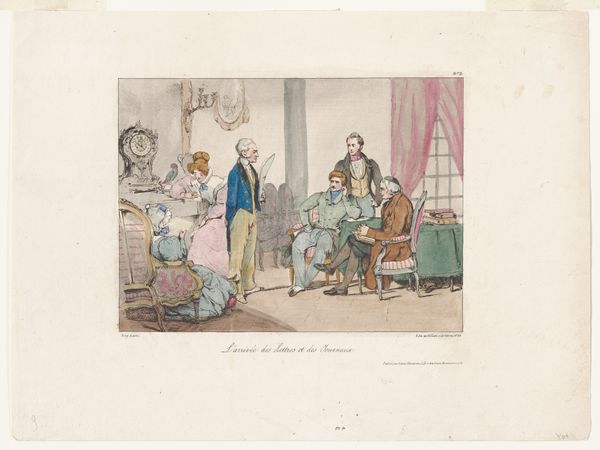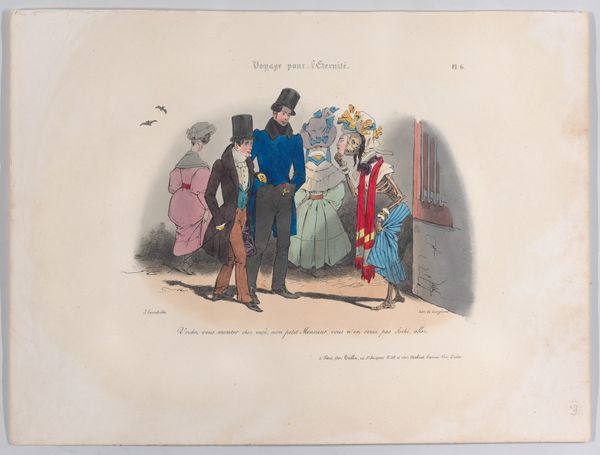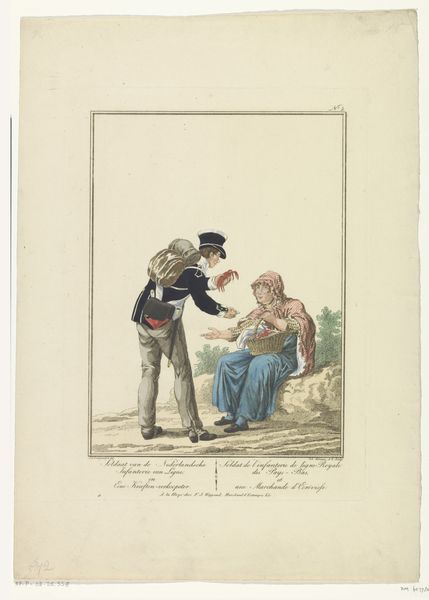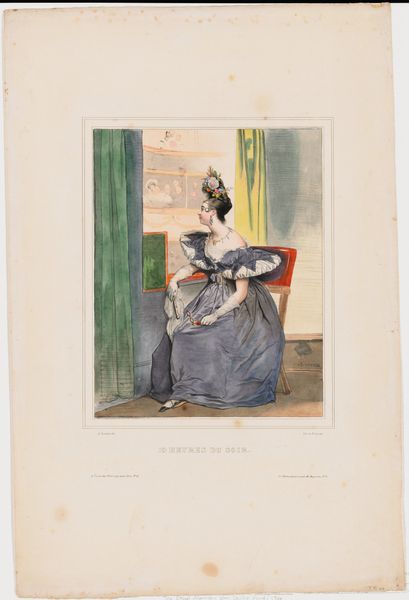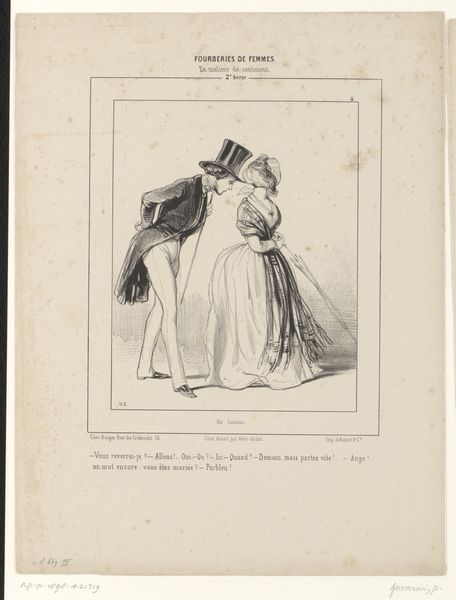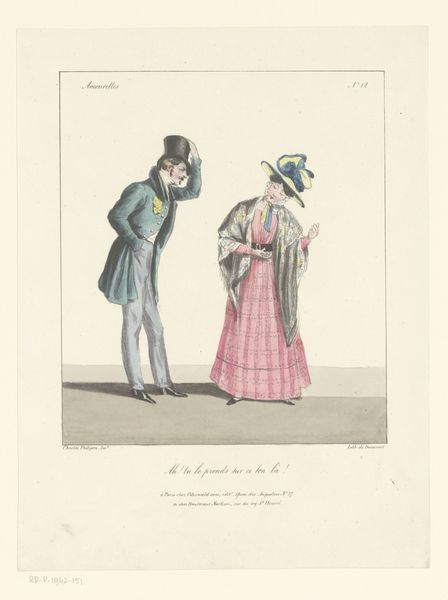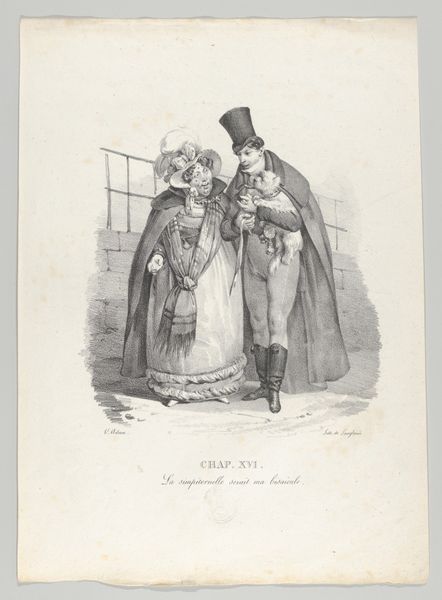
drawing, lithograph
#
portrait
#
drawing
#
lithograph
#
figuration
#
historical fashion
#
romanticism
#
genre-painting
Dimensions: height 248 mm, width 349 mm
Copyright: Rijks Museum: Open Domain
Curator: Alright, let’s turn our attention to "Bêtises, No. 4, ca. 1830 : O mon am (...)" a lithograph drawing created around 1830 by Jules-Joseph-Guillaume Bourdet. It's quite the scene. Editor: Yes, the title does set the stage, doesn’t it? At first glance, the mood strikes me as...tense, theatrical even. You've got this distraught gentleman and a young woman gazing upwards with this kind of pleading expression. Almost a Victorian melodrama. Curator: Melodrama is the perfect word. There’s a whole story simmering here, isn't there? Notice the man. Look at the rumpled papers in his hand, perhaps a rejected letter. He looks utterly crestfallen. He’s got this frantic energy, doesn’t he? Editor: Absolutely, his body language screams betrayal or frustration. And her eyes fixed skyward, as if appealing to a higher power. I can't help but wonder about the significance of her pink dress. Is it a symbol of naivety, or perhaps an allusion to romantic love gone sour? Curator: Fascinating point. Pink can carry all sorts of connotations depending on the context. Given that this piece is situated within the Romanticism movement, perhaps it's pointing towards idealised love, juxtaposed against the harsh reality of the situation. Then you have the room itself; the framed pictures in the background perhaps represent past happier times. It adds another layer. Editor: Layers indeed! The entire image seems meticulously constructed to convey a narrative. Even the discarded paper at the feet feels like a symbolic shedding of hopes and promises. It invites us to dissect these social dramas and question the roles we play. It reflects on this ongoing conversation between the inner emotional life and external societal expectations. It really holds a mirror to our own lives! Curator: Precisely. The brilliance here is in how Bourdet captures that emotional friction through subtle gestures and suggestive symbolism. Editor: It's left me considering how we negotiate love, loss, and social expectations even today, hasn't it? This work is really good at exploring the psychology behind our behaviors. Curator: I'm finding a lot of emotional complexity here, I'm not going to lie. A good moment to sit with yourself and examine our own foibles and struggles.
Comments
No comments
Be the first to comment and join the conversation on the ultimate creative platform.
